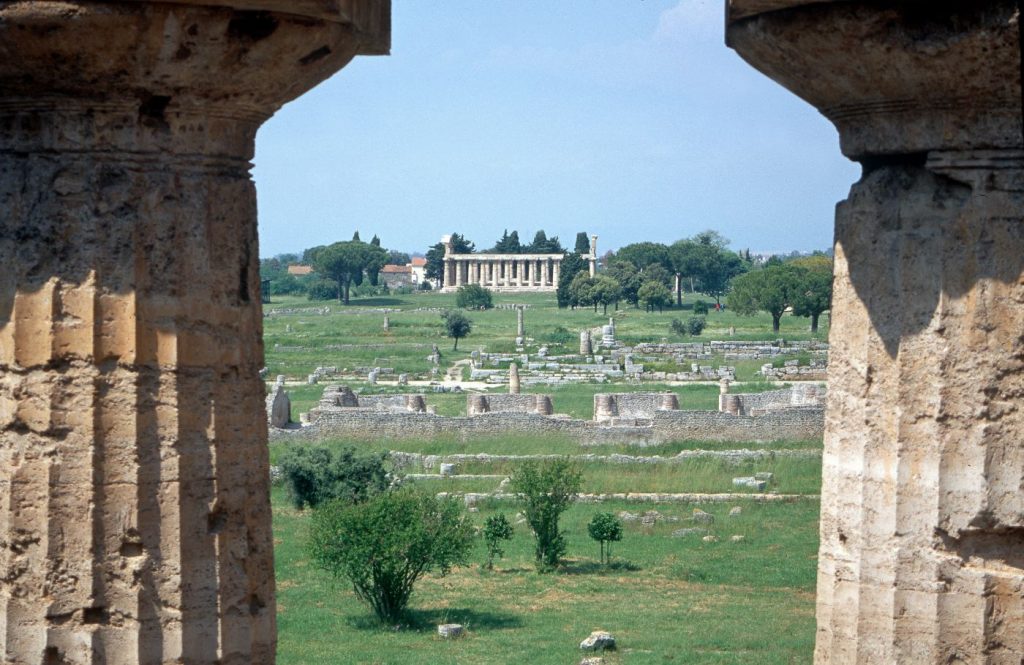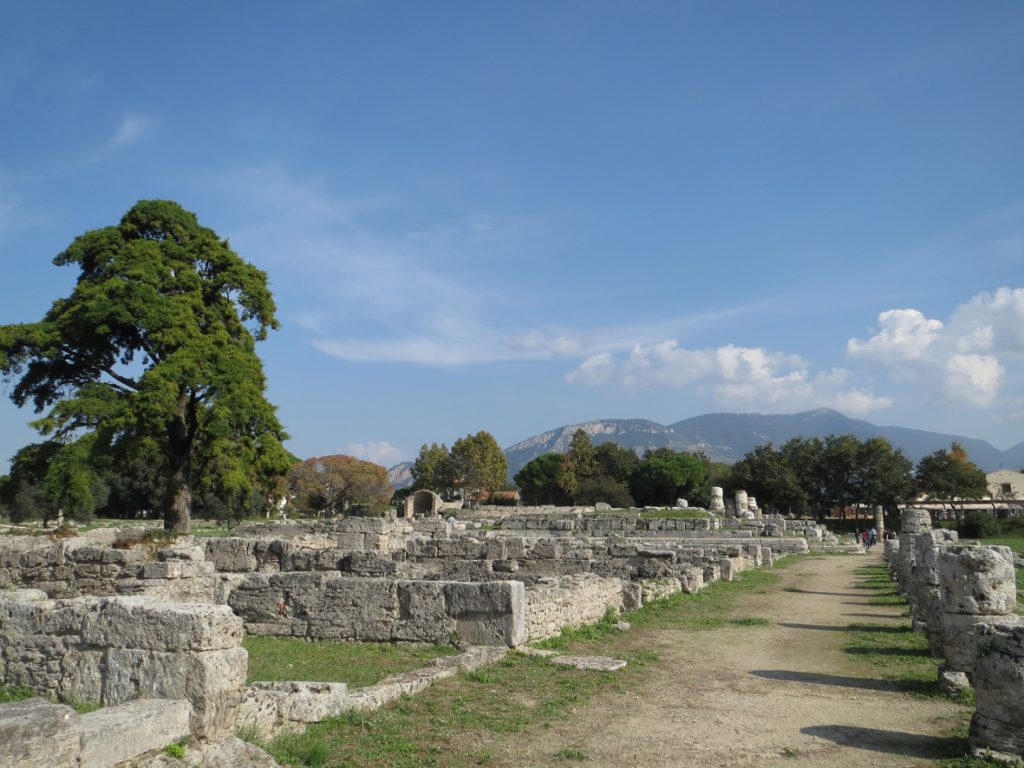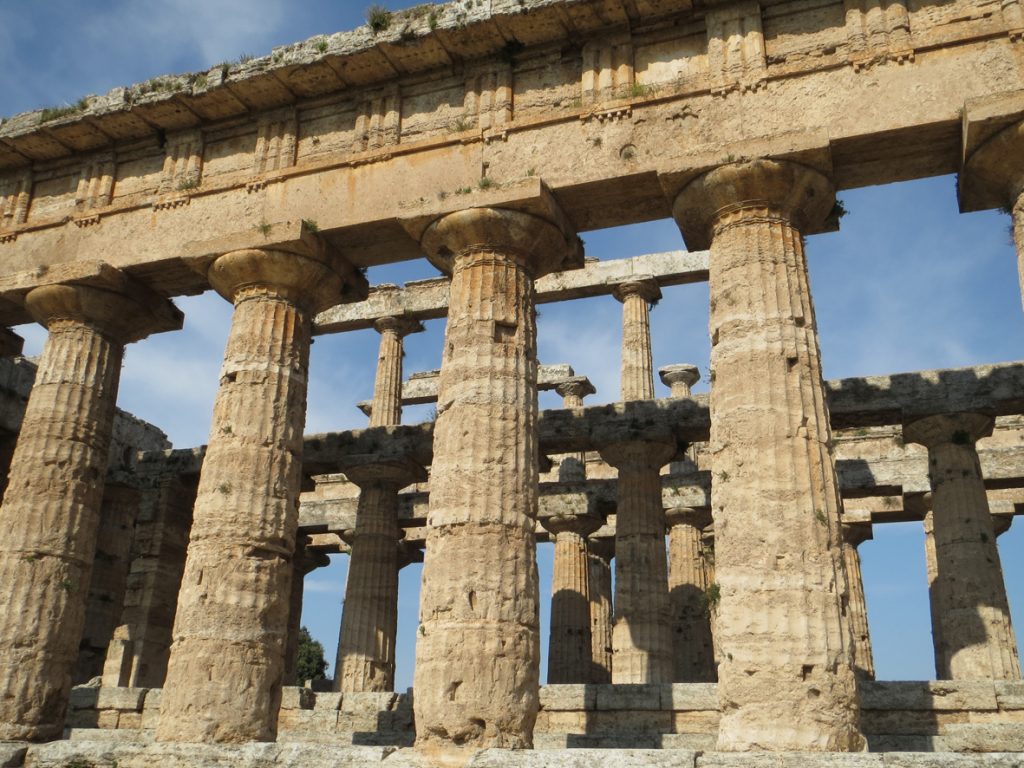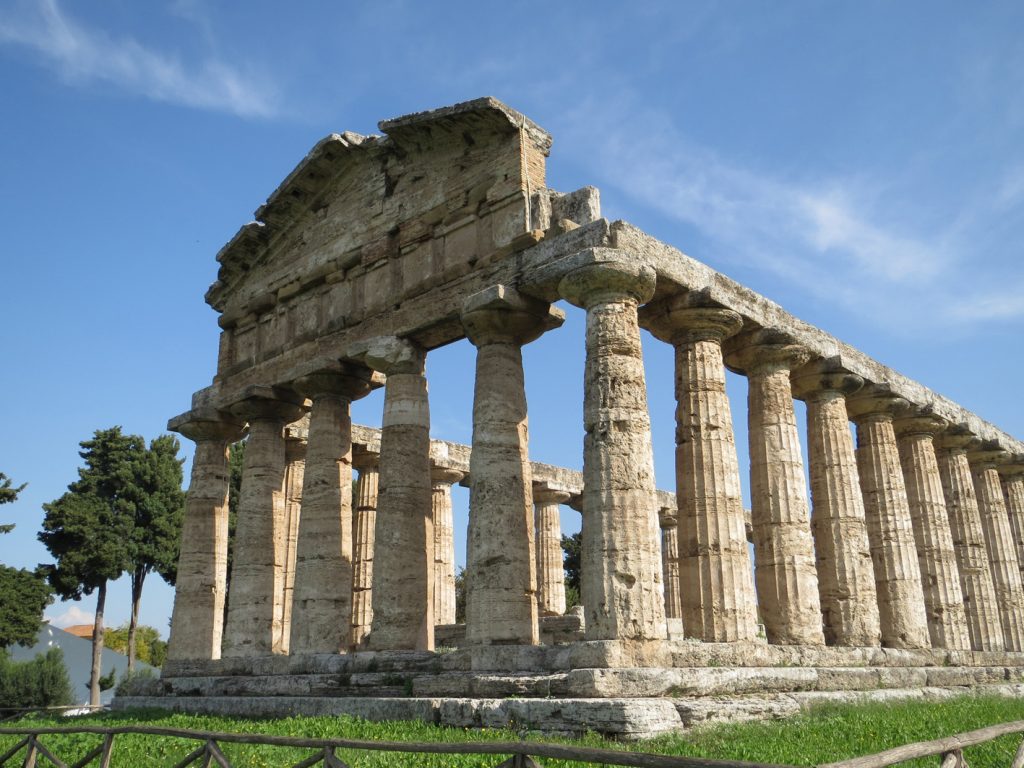Around 600 BC, Greek colonists founded the town of Poseidonia in the coastal plain of the Gulf of Salerno in what is now Campania. The fertile land and extensive trade led to the prosperity of the settlement. Extensive buildings were constructed, of which three large Doric temples from the Archaic and Classical periods have survived to this day. They have been known since the mid-18th century and have been widely described, but only in recent decades have they been systematically researched according to modern criteria.

Thanks to the erection of scaffolding around the entire Poseidon Temple for restoration purposes, it was possible for the DAI’s Rome department for the first time to fully and accurately measure a Greek temple from this period.
In the course of the Roman conquest of Campania, in 273 Poseidonia became a Roman colony under the name Paestum. Today visitors can view the remains of the city and the temple buildings at the archaeological site of Paestum.


